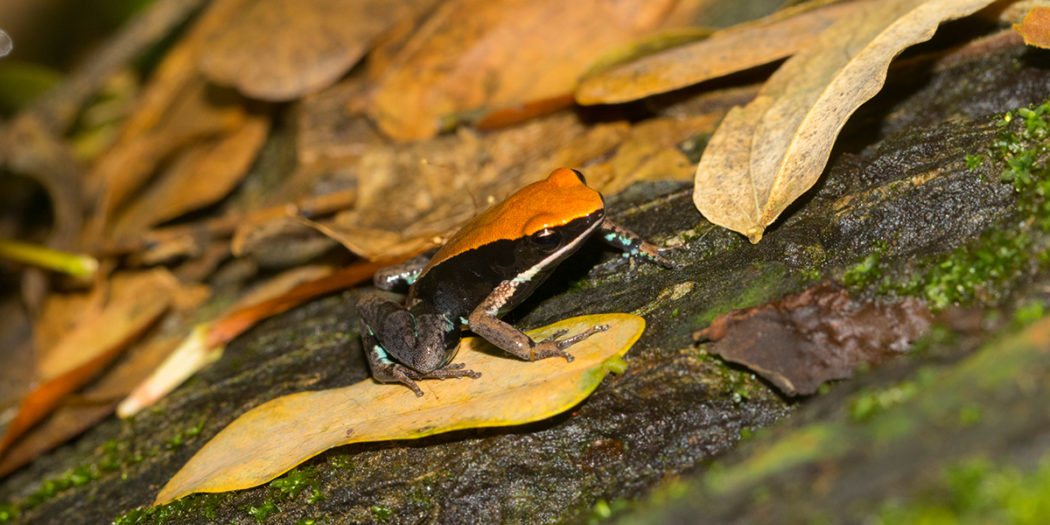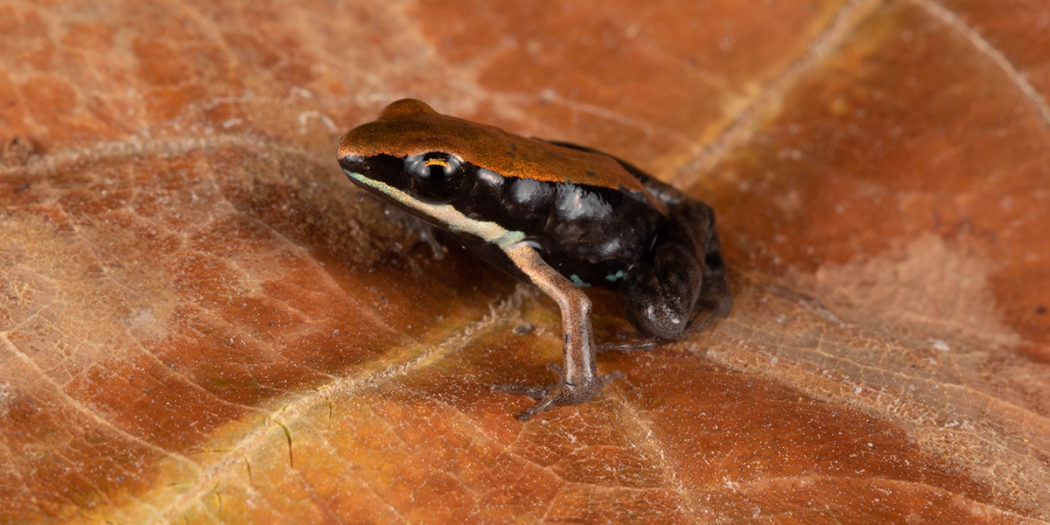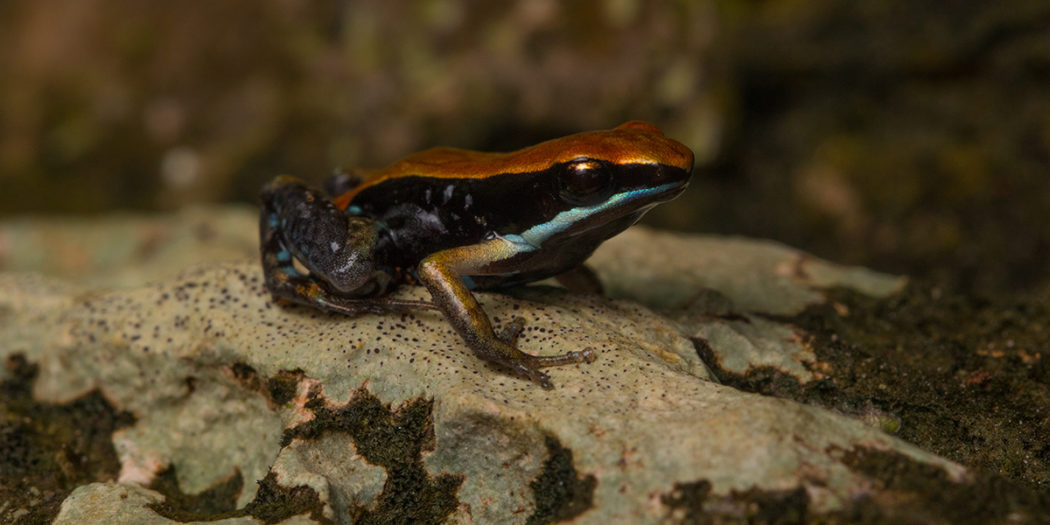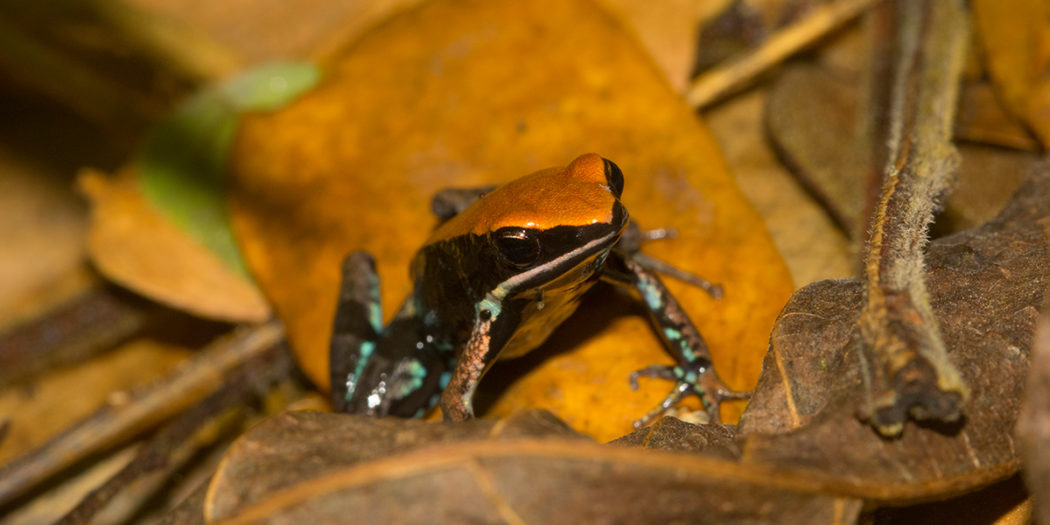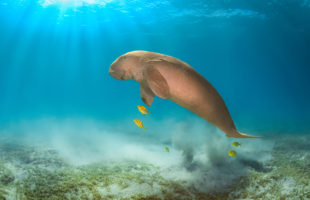Looks like a poison dart frog, but it’s not! Like their South American counterparts, frogs of the genus Mantella on Madagascar wear bright colors to draw attention to skin poisons. For humans, however, the small frogs of the island in the Indian Ocean are completely harmless. Ebenau’s colorful frog (Mantella ebenaui) doesn’t match its English name ‘Brown frog’. It wears orange or yellow to copper colors on its back, and its belly is black with blue spots. The lower lip is strikingly white. Males reach body lengths of up to 21 mm, females grow a smidge larger at up to 26 mm. Ebenaus frog feeds on small insects adapted to its body size. Fruit flies, ants, and tiny beetles are preyed upon with the flicking tongue.
The frog was named after Carl Ebenau, a merchant from Frankfurt. In the 1880s he worked for the distribution of export goods in Madagascar. The paleontologist Oskar Böttger, who was friends with him, profited from this work. He kept getting animals and plants sent to Germany to the Senckenberg Museum in Frankfurt. Böttger described most of the animals for the first time in the world. Among his new descriptions was then also the small frog of Mr. Ebenau.
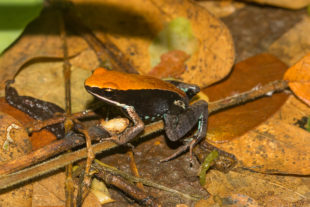
But back to Madagascar: Ebenau’s colorful frogs become particularly active during the rainy season, the reproductive season of the little fellows. After heavy rains, the males compete with each other. If a particularly desirable female is at stake, the males push each other off leaves and tree stumps. As an exception among frogs, Ebenau’s frogs use internal fertilization. The males cling to the back of the female in the so-called amplexus as in other frogs. However, the seminal fluid then runs into the cloaca of the female. Thus, the spawn is not fertilized outside the body as in other frogs, but inside the female. After mating, the female deposits the fertilized spawn near ponds or slow-moving waters such as small streams. The tadpoles later develop in these until their metamorphosis into frogs.
Ebenau’s frog occurs in two major distribution areas in Madagascar. One is the northwest around the coastal town of Ankify and the protected area of Manongarivo. Several islands like Nosy Be, Nosy Faly, or Nosy Komba belong to this habitat. On the other side of Madagascar, in the northeast, there is a second hotspot between Maroantsetra and Nosy Boraha (St. Marie). Mantella ebenaui is not necessarily dependent on pristine primary rainforests. The small frogs also live along narrow streams in coffee, cocoa, and pepper plantations. Thanks to this adaptability, they are not yet considered endangered on the IUCN red list. Good for Mr. Ebenau’s reputation, because the frog named after him will probably be observed and photographed by nature-lovers even more often.
 MADAMAGAZINE Your Magazine about Madagascar
MADAMAGAZINE Your Magazine about Madagascar

